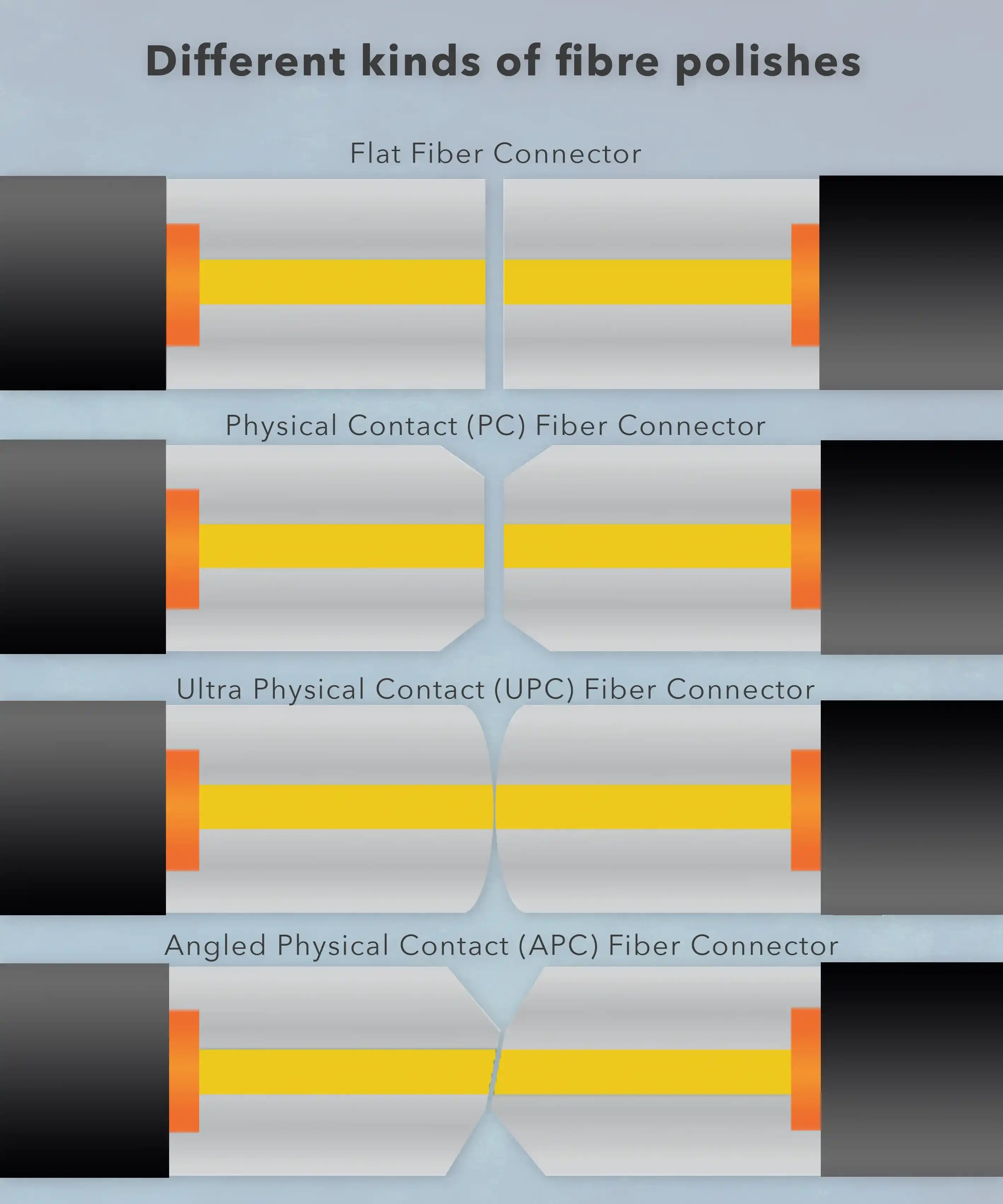Optical return loss
ORL, fiber attenuation
In telecommunications optical return loss (ORL) is a measure of the quality of a fiber optic link or connection. It is expressed in decibels (dB) and stated as a negative value. It represents the power ratio of the signal reflected back from a fiber optic component or connection compared to the power of the signal transmitted through the component or connection. A high return loss indicates e.g. dirty or badly inserted connectors or a broken optical fiber. It thereby creates multipath interference and degrades the signal.
Optical return loss in glass fiber can be caused by a variety of factors, including:
- Reflections from the fiber ends or connectors
- Bends or twists in the fiber that cause light to be reflected
- Splices or other defects in the fiber that cause light to be scattered
- Inhomogeneities in the fiber core or cladding that cause light to be reflected back
- Temperature changes that cause the refractive index of the fiber to change, leading to reflections
In Practice, optical return loss can be determined using OTDR measurements. High optical return loss can cause signals in a fiber link to be transmitted improperly. The measurement of return loss is therefore becoming increasingly important in the characterization of optical networks. This is especially the case as the use of wavelength division multiplexing, which has a lower tolerance for ORL, increases.
ORL is different from insertion loss. The latter describes the loss of signal power that occurs when a device is inserted into a transmission line. In this context
absorption, misalignment, or an air gap between the fiber components are the main causes contributing to insertion loss.
As network requirements in data centers have increased, attention to ORL has increased, which concerns especially connectors with their different ORL values. When connectors are repeatedly coupled and decoupled, the ORL value also deteriorates. Minimization of back reflection is achieved by special polishing techniques.

Image above: When two flat fibers are coupled using flat connectors, a small gap remains between the two fiber surfaces, and strong reflections occur at the surfaces (ORL values around -35 dB).
Physical Contact (PC) connectors are polished and have a slightly tapered design with a smaller end face, so less light is reflected back into the fiber, resulting in an ORL of about -45 dB.
Special polishing methods of the convex fiber end face distinguish the so-called Ultra Physical Contact (UPC) connectors. They have an even lower ORL value of up to -55 dB, can be used with both singlemode and multimode optical fibers, and enable more consistent signals in digital television and telephone systems.
The end faces of the APC (Angled Physical Contact) connectors for single-mode fibers have convex edges but are also angled at 8 degrees, allowing a much smaller gap between the fiber ends and closer contact with less pronounced reflections. ORL values for these connectors are less than -65 dB.


